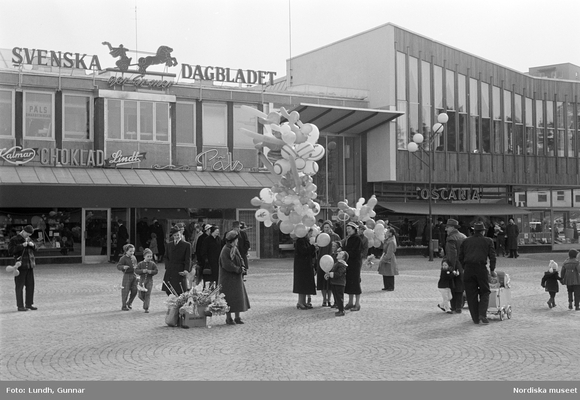Vällingby, the A-B-C acclaimed and renowned model, the social-democratic Welfare state flagship of Sweden, doesn’t recognize itself anymore. As many other post-war middle-aged New Towns around Europe, its founding principles have become outdated. That faith of the pioneer generation which had moved to the satellite town in the 1950s and 1960s to find a modern and prosperous life, has also gone.
The clash between utopia and the rough reality is becoming painful.
Similarly to the other cases explored in this research programme, these New Towns have been deeply hit by the economic crisis during the 1980s and Vällingby, like Evry, has seen its population reduced to half in those years. Interestingly this didn’t translate into a larger housing offer because, as Ulrika pointed out, the older people continued to live alone in the same apartments previously occupied with their children. While the 1990s have seen a tentative economic regeneration with great public and private investments in the renewal of the commercial centres: that happened in Vällingby, in Senart, in Milton Keynes and in Spijkenisse. Nonetheless, the outskirts and the peripheral areas have remained untouched for long time.
Each case is if course unique, but all together it is possible to recognize common phenomena: the stronger the ideals of the foundation, the more difficult to understand the changes which occurred and to accept the new image of the city (Evry, Milton Keynes).
The narrative of the A-B-C model is so powerful that the construction of a new narrative requires a lot of efforts, starting from the understanding of each other’s differences. With 43,3% of citizens with non-Swedish background and thousands of newcomers (refugees and asylum seekers) who arrived between Jan 2015 and Aug 2017, the cultural paradigm needs to be reformulated. The French partners in Evry called this a necessary “change of perspective”. Perhaps the city can contemplate the possibility of increasing the letters/values in order to integrate the historical city functions A-B-C with additional elements such as D (Diversity) or (Doer/Doing) – E (Equality, Education) – F (Fairness) and K (Kunst).
Hidden diversity. Culture and heritage can become factors of mutual recognition and understanding. As highlighted by Shane Downer (MK Council) during the lab, the original architectural features of the historic listed patrimony of Vällingby Centrum can be valued as a way to increase awareness among the new inhabitants. Culture can be a driver of inclusive processes and community participation, where diversity becomes the ingredient and the source of inspiration for the next era of the ‘City of tomorrow’ (as Vällingby was called in the 1950s).
Like Sandi Hilal explained with her ‘living room’ project: public space needs to be transformed to adapt to the present needs. New arrivals open the doors of their living rooms to welcome the local Swedish: then the process of inclusion has started. The living room becomes the new “public space” for sharing stories, experiences and backgrounds and the old life comes together with the new one. In her opinion, newcomers are a chance to critically look at our models of society and suggest that maybe it is time to change them.
Ph: The photo shows Vällingby Centrum in 1950. Source: Nordiska Museet




